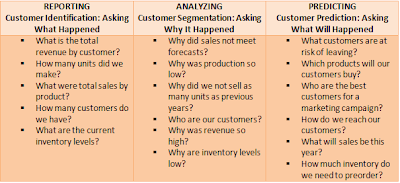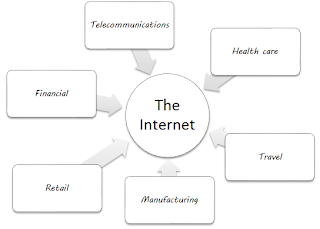Chapter 11 – Building a Customer-Centric Organization – Customer Relationship Management
CUSTOMER RELATIONSHIP MANAGEMENT (CRM)
CRM enables an organization to;
Ø Provide better customer service
Ø Make call centers more efficient
Ø Cross sell products more effectively
Ø Helps sales staff close deals faster
Ø Simplify marketing and sales processes
Ø Discover new customers
Ø Increase customer revenues
RECENCY, FREQUENCY AND MONETARY VALUE
An organization can find its most valuable customers by using a formula that industry insiders call FRM;
Ø How recently a customer purchased items (recency)
Ø How frequently a customer purchased items (frequency)
Ø How much a customer speeds on each purchased (monetary value)
THE EVALUATION OF CRM
CRM reporting technologies help organizations identify their customers across other applications. CRM analysis technologies help organizations segment their customers into categories such as best and worst customers. CRM predicting technologies help organizations predict customer behavior, such as which customers are at risk of leaving.
THE UGLY SIDE OF CRM: WHY CRM MATTERS MORE NOW THAN EVER BEFORE
CUSTOMER RELATIONSHIP MANAGEMENT’S EXPLOSIVE GROWTH
USING ANALYTICAL CRM TO ENHANCE DECISION
Ø Operational CRM – supports traditional transactional processing for day-to-day front-office operations or systems that deal directly with the customers
Ø Analytical CRM – supports back-office operations and strategic analysis and includes all system that do not deal directly with the customers
CUSTOMER RELATIONSHIP MANAGEMENT SUCCESS FACTORS
CRM success factors include;
Ø Clearly communicate the CRM strategy
Ø Define information needs and flows
Ø Build an integrated view of the customer
Ø Implement in iterations
Ø Scalability for organizational growth
USING ANALYTICAL CRM TO ENHANCE DECISION
Operational CRM and analytical CRM





Comments
Post a Comment